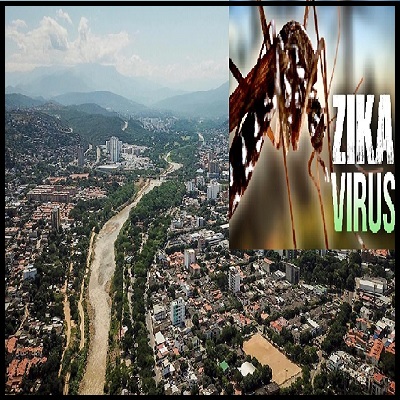Determining risk factors in the transmission of ZIKA virus infection in the municipality of Cúcuta and its metropolitan area.
DOI:
https://doi.org/10.24054/bistua.v21i2.2318Keywords:
ZIKA Virus; Risk Factors; Disease TransmissionAbstract
The objective of this research is to describe the determining risk factors in the transmission of ZIKA virus infection in the municipality of Cúcuta. To achieve this objective, a Base Line is established with 50 questions on the knowledge presented by families with the ZIKA Virus disease and the risk factors that favor the presence of the transmitting vector in the study area. The results allow us to determine that the vast majority of the families interviewed know about the disease caused by the ZIKA Virus and are very well aware of the risk factors that are determinant in the transmission of the disease. The presence of Aedes sp. in water storage tanks, it is a constant in the households interviewed. In the same way, the presence of garbage in the patios of the houses occurs in the vast majority of these families, as well as the sociocultural behaviors that favor the risk of contagion in the study area.
Downloads
References
Teixeira M.G., Costa M.C.N., De Oliveira W.K., Nunes M.L. y LC Rodrigues. The epidemic of Zika virus-related microcephaly in Brazil: detection, control, etiology, and future scenarios. Rev. Am J Public Health 106[4] (2016) 601-5. DOI: 10.2105/AJPH.2016.303113.
Musso D., Gubler D.J., Zika virus. Rev. Clin Microbiol. 29[3] (2016) 487-524. DOI: 10.1128/CMR.00072-15
Parra B.M., Lizarazo J.M., Jimenez J.A.A., Zea-Vera A.F.M.D. Guillain Barré syndrome Associated with zika virus infection in Colombia. Rev. J Med 20.,375(16) (2016) 1513-1523.doi: 10.1056/NEJMoa1605564
Piovezan R., de Azevedo, T.S., Faria E., Veroneze R., C. Von Zuben J., Von Zuben F. J., Sallum M.A.M. Assessing the effect of Aedes [Stegomyia] aegypti [Linnaeus, 1762] control based on machine learning for predicting the spatiotemporal distribution of eggs in ovitraps. Rev Dialogues in Health 1 (2022] 100003. http://dx.doi.org/10.1016/j.dialog. 2022.100003
PAHO. Guía para la vigilancia de la enfermedad por el virus del Zika y sus complicaciones. PAHO. 2016.
PAHO. Alerta epidemiológica infección por virus zika. PAHO. 2015 Mayo 07.
Instituto Nacional de Salud INS. Protocolo de Vigilancia en Salud Pública. Enfermedad por Virus Zika. 2016
PAHO. Síndrome neurológico, anomalías congénitas e infección por virus Zika. 2016.
Anil K. Guillain Barré syndrome: causes inmunopathogenic mechanisms and treatement. Jounal of Expert. Rev Clin Immunol 12(11) (2016) 1175-1189.doi: 10.1080/1744666X.2016.1193006. Epub 2016 Jun 21.
Lucchese G., Kanduc D. Zika virus and autoimmunity: From microcephaly to Guillain-Barré syndrome, and beyond Autoimmun Rev 15(8) (2016) 801-8. doi: 10.1016/j.autrev.2016.03.020.Epub 2016 Mar 25.
Cauchemez S., Besnard M., Bompard P., Dub T. Asociacion entre el virus Zika y la microcefalia en la Polinesia francesa. Rev. The Lancet. Vol 387 (2016). DOI:https://doi.org/10.1016/S0140-6736(16)00651-6
Parra B.M., Lizarazo J.M., Jimenez J.A.A. Zea-Vera A.F. Guillain Barré syndrome Associated with zika virus infection in Colombia. Rev. N Engl J Med. 20.,375(16) (2016)1513-1523. DOI: 10.1056/NEJMoa1605564

Additional Files
Published
Versions
- 2023-12-12 (2)
- 2023-07-31 (1)
How to Cite
Issue
Section
License
Copyright (c) 2023 © Autores; Licencia Universidad de Pamplona.

This work is licensed under a Creative Commons Attribution-NonCommercial-NoDerivatives 4.0 International License.
© Autores; Licencia Universidad de Pamplona





